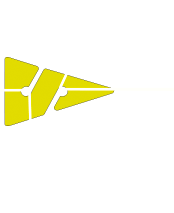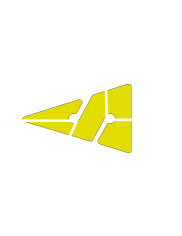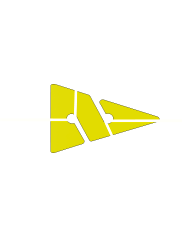
“IF ONLY YOU KNEW THE
POWER OF THE DARK SIDE…”
courses
@SOUTH WEST TECHNICAL DIVING


Technical Diving on Open Circuit - is it for you?
Step up or Step Across? The leap from recreational to technical diving
Most dive agencies lay out a ladder type pathway for dive development, showing each course as a step up, building on the last. Then you reach the top of the ladder, Master Scuba this or Leading that… At this point continuation of your dive training appears to be further upwards, into professional qualifications (Dive Master / Leading diver) or perhaps into technical qualifications, cave, open circuit or rebreather. Both are presented as upward steps. Looks better on the marketing and appeals to people’s sense of status. I really wish we could stop doing that.
Rather let’s look on each of those pathways as separate roads, all a bit windy and in places, touching or connecting. For example, open water Sidemount. Doesn’t need to be technical, or another example. SAC rates and gas planning, should be the same across all pro/rec/tech pathways. Even buoyancy trim and propulsion should touch more closely.
Now before we start I’m not a trim nazi who insists that all of you have to be flat and frog kicking. As long as you are safe in the recreational diving ranges and HAVING FUN, no problem. Yes, you will enjoy your dive more if you can hold good trim, use non silting, non-environment disturbing and efficient propulsion techniques and be like a fish for buoyancy. But you don’t have to. Not if your diving is safe and fun. Not if your ‘style’ does not impact negatively on others. Please enjoy.
The challenge occurs when you want to explore a different pathway. How close you are and how big a leap it will be onto the alternate will depend on your jumping off point. For most recreational divers, the leap across into technical is, at the first level, quite a big jump. If you do it correctly (I’m avoiding ‘Doing it right’ for a reason) and instil a solid foundation at that point for your future technical development then moving from what you’ve been taught recreationally to technical will be challenging. A good tech instructor will be honest about this and should not box tick you through an intro to tech or entry level tech course just to sell you on the next levels.
Changes
Let look at the main changes from recreational to technical
- Buoyancy: There are a number of issues here but primarily the standard of buoyancy control needs to be much higher for tech than rec. 30cm up or down and stable and unmoving in a hover is a good starting standard. Later for trimix and cave you can raise the bar. What affects it
- Existing buoyancy management.
- Over reliance on lungs, common in recreational divers who compensate for not having a feel for using the bcd and / or wing to give a solid platform.
- Using a drysuit for buoyancy. I know this is common in recreational diving, mainly so it’s easier to manage the buoyancy, although the effect on balance and trim is poor. Using a drysuit for buoyancy is easier if you are feet down all the time, not something used in tech. Just enough air in the suit to stay warm and not be squeezed.
- Existing buoyancy management.
- Use the BCD/wing. Correctly weighted the use of the wing/bladder is minimal anyway, at least till 10m plus. In a good bcd or wing you hang under a balanced aircell, so much nicer and easier once used to it.
- Tech approaches to buoyancy management
- Much less use of lungs
- Much more use of wing/bcd
- No use of suit for buoyancy, maybe a bit of air (feet area or upper back) to help with trim
- Trim
- Recreational 45 degree standard. Look, it works. It’s a bit sea horse in nature and not ideal, but why learn to drive like a racing driver if you are only going for a stroll.
- It will use more gas (bigger cross sectional resistance through the water)
- It will make you swim upwards meaning you have to compensate with lungs to keep a constant depth – so up and down
- Recreational 45 degree standard. Look, it works. It’s a bit sea horse in nature and not ideal, but why learn to drive like a racing driver if you are only going for a stroll.
- It’s not a good position for efficient circulation so offgassing is compromised, but in shallow no stop diving, not a big deal.
- Technical, Flat trim, skydiver position, feet high is normal. This is often one of the hardest transitions to make for recreational divers. 20-25 degrees up from their habituated 45 degrees feels flat, actual flat trim feels like they are head down. Its beneficial though
- All kicks are made clear of the bottom, meaning minimal disturbance
- You have a small cross sectional area so less resistance, easier movement through water with less effort, better gas consumption
- Off gassing and circulation does not have to fight gravity
- It is more balanced and kicks drive you forward only, not upwards making precise buoyancy control easier.
- Propulsion
- Classic flutter kick (with or without split fins!). Lets be honest, it works. It does disturb the ground under you – and above you but you will get where you want to go. Its hard work though, especially if not flat. Now imagine carrying 2 or 3 times the number of cylinders, two or three reels/torches and wetnotes, extra cutters, extra computer/timer and efficient propulsion becomes suddenly critical
- Frog kick, easy enough and most get this quickly, keeps feet high and does not disturb fragile or silty environments if used carefully
- Modified Frog, Shuffle, Modified flutter – useful but does take extra time to learn, not really adding value to recreational divers.
- Back kick – this is one I do think everyone should learn but it does mean the split fin market will die….. However to back off a reef or delicate object without touching it, to hold position on a student or team mate or simply to have full control, it is worth the time to develop. Not hard once you know how.
- Helicopter turn. Very useful for bubble checks which should I feel be added to a recreational divers toolkit / standard procedures.
- Equipment Load
- This is one of the big differences, even just putting on a twinset and stage are a massive added weight in and out of the water and can feel quite unsettling for the first dive or two. The trick here is go slowly and feel your way along. Bearing in mind the diver is probably also simultaneously trying to get into flat trim and change their propulsion and buoyancy approaches, the degree of task loading is massive. This is where an experienced instructor can really help. Adjusting the gear to make it a more balanced rig, making the students life easier. Mainly though reassuring the student that this is normal and helping them with appropriate cues keep up their knees, head and back posture that will accelerate any adaptations.
- Two of everything, three of some things. (well almost)… This is part of the mindset change as much as the equipment load. In recreational diving, completely correctly, the answer to almost any problem is go up to the surface. In tech the option to surface is probably not there due to a soft overhead or decompression ceiling, so you have to solve the issue underwater. Hence carrying extras of everything, including gas. This allows you to enter the water with an attitude of ‘go to back-up’ diagnose and solve problem, exit safely and calmly.
- Equipment Use
- Long hose/Primary Donate. This is pretty much accepted now as the default method in tech, yet it holds massive advantages in recreational as well. The arguments about having things around your neck just don’t hold any weight if you are properly trained. The only valid argument these days against primary donate is covid19. Let’s just picture a real life out of gas. They will not swim up to you calmly and signal, nor will they carefully search your triangle (please don’t read that wrongly) for something to breathe. They will grab the most obvious thing that will give them a breath – unless you are holding a second stage reg between you and the out of gas diver, that means they will grab the reg from your mouth. They are drowning, not thinking!
- Isolation and preservation of gas via valves or manifold. For recreational divers the idea of solving a freeflow by closing a valve, or preserving gas by shutting a manifold is alien. For a tech diver, its difficult to understand why you would not have this ability.
- Attitude and Decision Making
- This is probably the biggest difference in tech v recreational. Surprisingly and in contrast to the very small minority of people who think or espouse tech diving as an adrenaline junkie, testosterone fuelled activity, it is quite the opposite. Attention to detail. Thoroughness, intense risk management and in depth planning (including contingencies and what ifs) all contribute to tech divers being a lot more conservative than many recreational divers. The idea of turning on an arbitrary pressure and surfacing with 50 bar as an arbitrary safety reserve, do not fit a tech mentality. Gas consumption and safety limits will be calculated to the litre.
- Decisions are made on the basis of pre-planned responses to known potential contingencies for which equipment and training is carried and applied. In rec the answer to almost all problems is surface. This can cause all sorts of issues, especially as it reinforces the ‘escape’ mentality as a viable answer. In tech we know what our reserves, backups and options are. For sure we will exit when safe and appropriate, but calmly and without fuss.
- Team Mindset
- Despite a reputation as sad introverted loners (sorry, of course that’s cave divers – inc me!) most tech divers prefer to dive as part of a team, not only is the equipment load shared, but also the task load and decision making. Mutiple brains, ideally with different ways of thinking about problems and solutions should create a cohesive and synergistic team that’s greater than the sum of it’s parts. Some tech and cave guys dive solo, which has its own risk profile – but done correctly is a valid way to dive, as long as your backup plans and equipment load is appropriate.
- In Water Positioning
- In recreational buddy pairs should swim together, but invariably we see them swimming one behind the other. It’s easier to follow someone this way but your dive memories will be dominated by the sight of a pair of fins. In tech we position so not even a head turn is required to check with your team member, so that the tasks each team member has are able to be performed and communicated and assisted in a team manner. Ascents and descents, where problems are most likely to occur are done with the team facing each other, literally one kick away from being able to assist. Teamwork in tech is essential, not a loose arrangement.
- Planning
- There is a significantly greater level of planning in tech diving, which of course for the deeper decompression dives makes sense. We are now seeing this coming into recreational diving though. Sac rates and gas consumption, best gas for depth, pre planned max bottom times all are used to a greater or lesser extent by recreational divers. Even doing an entry level tech course will really open you up to the benefits for all dives, not just big hairy tech dives.
- Failure and Redundancy approaches (two is one and one is none)
- As mentioned before in attitude, recreational diving’s default answer to a problem is surface. In tech we usually carry and more importantly, train to utilise
- A complete independent breathing source (tank, regulator, buoyancy feed), the independence may be created by isolating a twinset manifold or via independent cylinders as in Sidemount
- At least two cutting devices reachable with either hand
- As mentioned before in attitude, recreational diving’s default answer to a problem is surface. In tech we usually carry and more importantly, train to utilise
- 2 (3 in cave) lights, a main and a backup
- Spare mask
- 2 reels / spools
- Two smb’s, inc one designated as an emergency smb
- Tech divers also plan contingency reserves based on known ‘what if’s’. Mostly this is reserve gas – known as minimum gas, but can be reserves related to time based on physical, mental and thermal tolerances. Eg if you are good for three hours then dive for two…
- Cylinder marking and analysis
- Everything, including air gets analysed and marked. Honestly if this was one habit I could instill in all divers it would be proper gas analysis and labelling. Check out here how and why.
How can you prepare for and cope with these pathway changes?
There are many areas above that could be applied equally well to all diving, whether on a recreational, technical or professional pathway. However look for the commonalities between pathway. What has proven to be good examples that can enhance safety, enjoyment and skill in all pathways. Try to integrate these into your current diving and development plan. For example, propulsion techniques. Seek out an instructor not for courses but for a day or two’s coaching. Work on specifics that develop you on your current pathway.
The choice is not to step up onto some imaginary higher status ladder, it’s to step across and develop yourself down the pathway that best meets your diving ambitions.


set up a
coffee and
A chat
with a jedi
set up
an online chat
with a sith


upcoming
courses
TRAINING THAT WILL FOREVER
CHANGE THE WAY YOU DIVE!!
diving
liability
insurance

ARE YOU COVERED?
If you plan on traveling and diving,
get one of Diveassure’s exclusive
and comprehensive Dive & Travel
plans….











